Energy News.....
Nuclear Engineer: Even worse news at Fukushima plant — Radioactive water has formed pathway and is flowing straight into Pacific Ocean (AUDIO)
Fukushima Diary.....
Tritium density continuously increasing upstream of groundwater bypass wells since October of 2013
Posted by Mochizuki on February 3rd, 2014 · No Comments
Note : Thank you for reading Fukushima Diary. Fukushima Diary is genuinely supported by your donation.
Monthly recurring donation is also appreciated.
Monthly recurring donation is also appreciated.
Tritium density in groundwater has been constantly increasing since October of 2013, according to Tepco.
The graph below published by Tepco shows the increasing trend but it is not entirely clear because the density is represented logarithmically.
The sampling location is upstream of groundwater bypass wells. Tepco plans to discharge the water pumped up from those wells, and Tritium can’t be filtered out.
Tepco hasn’t made any announcement about the increasing trend and the reason is not identified.
Related article..Fukushima citizen “Fishermen’s anger will explode if Tepco discharges contaminated water to the sea” [URL]
Cesium-134/137 level spiked in 21 elementary school ground soil in Kamakura in 2013
Posted by Mochizuki on February 3rd, 2014 · 3 Comments
Note : Thank you for reading Fukushima Diary. Fukushima Diary is genuinely supported by your donation.
Monthly recurring donation is also appreciated.
Monthly recurring donation is also appreciated.
Cesium-134/137 density spiked up in 13 of 16 elementary school ground soil of Kamakura in 2013.
In these 16 schools, Cesium-134/137 density was lower than detectable level in 2012, however it jumped up in 13 schools in 2013. The highest reading was 137 Bq/Kg in total of Cesium-134/137. This is 1.3 times much as the food safety limit.
The measurement time was in August in both of the years. The cause is not known and Kamakura municipal government has made no announcement either.
Additionally, Cesium-134/137 was measured in 8 more schools that they didn’t take the samples of in 2012. Among those schools, the highest reading was 156 Bq/Kg in total of Cesium-134/137.
Fukushima citizen “Fishermen’s anger will explode if Tepco discharges contaminated water to the sea”
Posted by Mochizuki on February 2nd, 2014 · No Comments
Note : Thank you for reading Fukushima Diary. Fukushima Diary is genuinely supported by your donation.
Monthly recurring donation is also appreciated.
Related to this article.. Total Tritium in contaminated water increasing by 330 Trillion Bq per year / Beyond discharge-able amount [URL]
Co-op staff in Fukushima commented to the questionnaire of Ministry of Economy, Trade and Industry that fishermen’s anger will explode if Tepco discharges the Tritium water. It was published in the Tritium task force.
For the question about what kind of things are anticipated to happen if Tritium water is discharged to the sea, the staff answered,
1. Fukushima prefectural residents would entirely lose the trust in the government of Japan.
2. The residents would not want to come back even if they lift the evacuation order.
3. Fishermen’s anger would explode.
4. The harmful rumor about agricultural products would spread again though it has been finally swept away.
5. It would spread the international harmful rumor too.
Total Tritium in contaminated water increasing by 330 Trillion Bq per year / Beyond discharge-able amount
Posted by Mochizuki on February 2nd, 2014 · 5 Comments
Note : Thank you for reading Fukushima Diary. Fukushima Diary is genuinely supported by your donation.
Monthly recurring donation is also appreciated.
Following up this article.. 875,000,000,000,000 Bq of Tritium contained in total contaminated water / Over 60 times much as safety limit [URL]
Tritium contained in contaminated water is increasing by approx. 230 Trillion Bq per year, from the data Tepco submitted to Ministry of Economy, Trade and Industry.
The data shows tritium amount was 300 Trillion Bq in September of 2011. It became 817 Trillion Bq in December of 2013. It has been increasing almost linearly for 27 months.
Nuclear power plants discharge Tritium in normal operation, but it’s supposed to be approx 3.7 Trillion Bq per year from one reactor. 230 Trillion Bq/year is over 15.5 times much as this guideline standard of 4 reactors.
Even the multiple nuclide removing system cannot filter out Tritium. Even if they decide to discharge the contaminated water to the sea, they would take forever in compliance with the safety guideline because it increases faster than discharged.
Tepco not to analyze 25m underground water for Strontium-90 anymore / Sr-90 data to be concealed from now on
Posted by Mochizuki on January 31st, 2014 · No Comments
Note : Thank you for reading Fukushima Diary. Fukushima Diary is genuinely supported by your donation.
Monthly recurring donation is also appreciated.
Following up this article.. Strontium-90 confirmed to spread all over underground of Fukushima plant area [URL]
Tepco is not going to analyze the groundwater for Strontium-90 which is taken from 25m underground anymore. They announced this in the press conference of 1/31/2014.
From their past analysis, 60,000 Bq/m3 of Strontium-90 was measured from 25m underground, 36,000 Bq/m3 was also measured from the upper permeable layer, which proves Strontium-90 has spread all over underground in Fukushima plant.
Since last time they detected 60,000 Bq/m3 of Strontium-90, they have taken 6 groundwater samples. However, they are not going to analyze them about Strontium-90, and will not analyze the potential samples in the future about Strontium-90 either.
Strontium-90 is assumed to be spreading underground to flow to the sea, but the significant data will be concealed from everyone again.
Reactor3 coolant water leakage → Tepco
“Don’t know the latest status”
Posted by Mochizuki on January 31st, 2014 · 2 Comments
Note : Thank you for reading Fukushima Diary. Fukushima Diary is genuinely supported by your donation.
Monthly recurring donation is also appreciated.
Following up this article.. Reactor3 coolant water possibly leaking since before explosion of 311 [URL]
Tepco is not checking the on-going situation of the direct leakage of coolant water in reactor3.
Tepco accidentally found about 1/3 of coolant water leaking out to the reactor building this January. The leaking point is not identified because the radiation dose is too high.
The leaking water has directly touched the molten fuel.
In the press conference of 1/31/2014, Tepco was inquired about if it’s still leaking by the press. Tepco’s spokesman “answered” that they don’t know if it’s still leaking, they haven’t even installed a surveillance camera on the leaking point.
It is questionable if Tepco properly recognizes the responsibility to decommission the plant.
Strontium-90 confirmed to spread all over
underground of Fukushima plant area
Posted by Mochizuki on January 31st, 2014 · No Comments
Note : Thank you for reading Fukushima Diary. Fukushima Diary is genuinely supported by your donation.Monthly recurring donation is also appreciated.
Following up this article.. 60,000 Bq/m3 of Strontium-90 detected from groundwater of 25m underground [URL]
On 1/31/2014, Tepco announced they measured 36,000 Bq/m3 of Strontium-90 from the upper permeable layer.
It has been reported Strontium-90 was detected in the deeper permeable layer of 25m underground. Now it’s confirmed that Strontium-90 is already spreading in every layer of underground.
The sample was taken last November. Usually Strontium-90 analysis doesn’t take longer than a month. Tepco’s reports about Strontium-90 are still behind the schedule.
[Short Column] Where is the molten fuel ?
Posted by Mochizuki on January 31st, 2014 · 10 Comments
Note : Thank you for reading Fukushima Diary. Fukushima Diary is genuinely supported by your donation.
Monthly recurring donation is also appreciated.
Iori Mochizuki
After almost three years since the start of the nuclear accident on March 11, 2011, cleanup efforts continue extremely slowly (and probably manually by human workers). Here are some before-and-after photos taken by TEPCO, but most of them are close-ups. You do not get much sense of how the plant has been de-cluttered overall (if at all).
The area photographed is between the ocean side of the turbine buildings and the embankment along the plant harbor. Radiation levels remain high here. Hoses and pipes that transport water run amid the debris.
From TEPCO's photos and videos library, 1/30/2014 (more photos at the link):
People often ask me about where I think the molten fuel is.
I assumption is this, the fuel assemblies are entirely molten a few hours after the station power blackout in 311. When they vented the vessels, a part of the molten fuel splashed out of the primary containment vessels, could be even out of the venting stacks.
The rest of the fuel was scattered everywhere in the vessels and the reactor buildings due to the explosion. Some of them might be in the base concrete.
Currently those are moving with coolant water, and are in individual stages of fission reactions, which are small enough not to be detected outside of the plant area.
Currently those are moving with coolant water, and are in individual stages of fission reactions, which are small enough not to be detected outside of the plant area.
The decay power probably isn’t large enough to cause additional hydrovolcanic explosion anymore, but widely scattered fuel is making decommissioning more difficult.
Ex - SKF .....
FRIDAY, JANUARY 31, 2014
#Fukushima I NPP: Painstakingly Slow Cleanup, One Vehicle at a Time
After almost three years since the start of the nuclear accident on March 11, 2011, cleanup efforts continue extremely slowly (and probably manually by human workers). Here are some before-and-after photos taken by TEPCO, but most of them are close-ups. You do not get much sense of how the plant has been de-cluttered overall (if at all).
The area photographed is between the ocean side of the turbine buildings and the embankment along the plant harbor. Radiation levels remain high here. Hoses and pipes that transport water run amid the debris.
From TEPCO's photos and videos library, 1/30/2014 (more photos at the link):
Before:
After:
Before:
After:
Before:
After:
Before:
After:
TEPCO had a chance to clear the site in March 2011, when large SDF tanks fitted with "dozer armour" (plate to push out debris) were sent to the plant. (See my March 20, 2011 post.) But the tanks were never used. Why? Because TEPCO had already had workers lay electric cables over the debris in their haste to restore the power to the plant, and they couldn't remove the debris without damaging the cables.
(Sigh.)
(Sigh.)

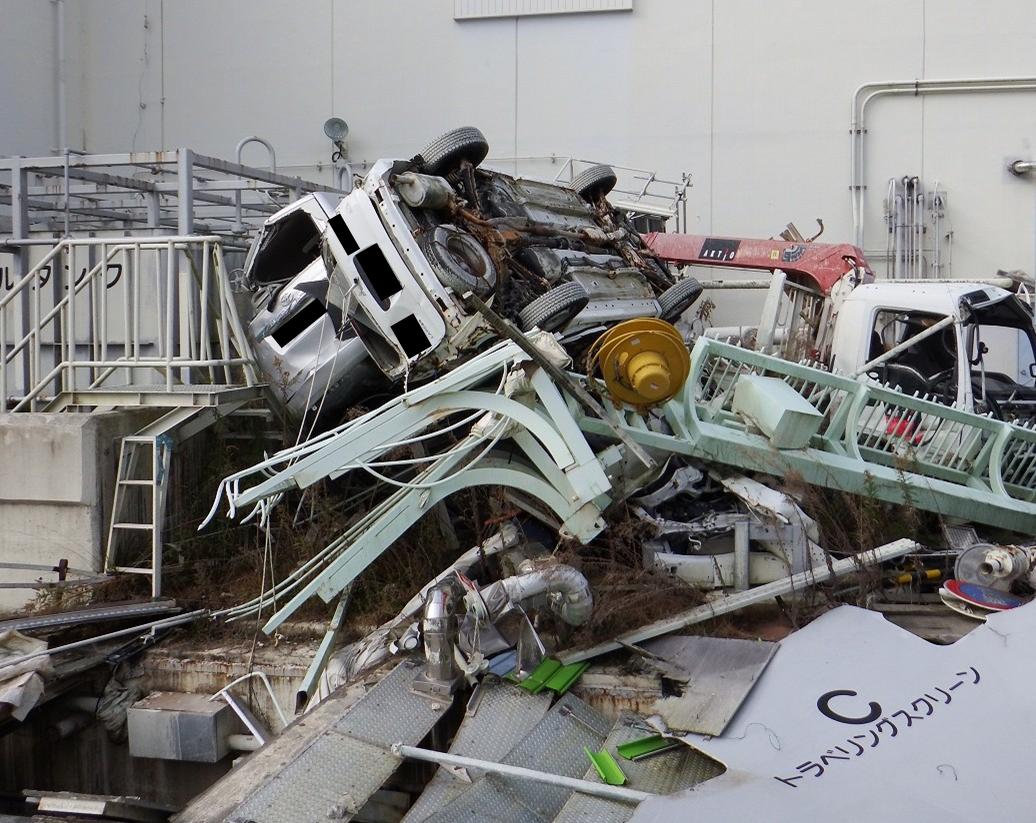
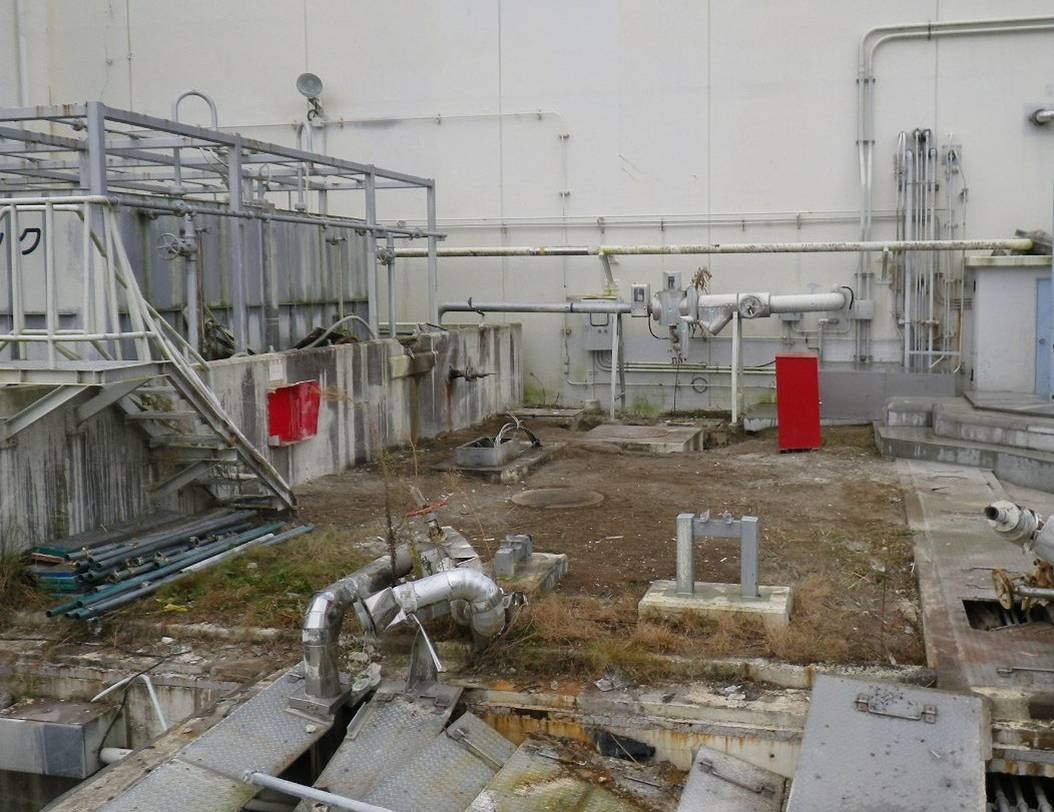
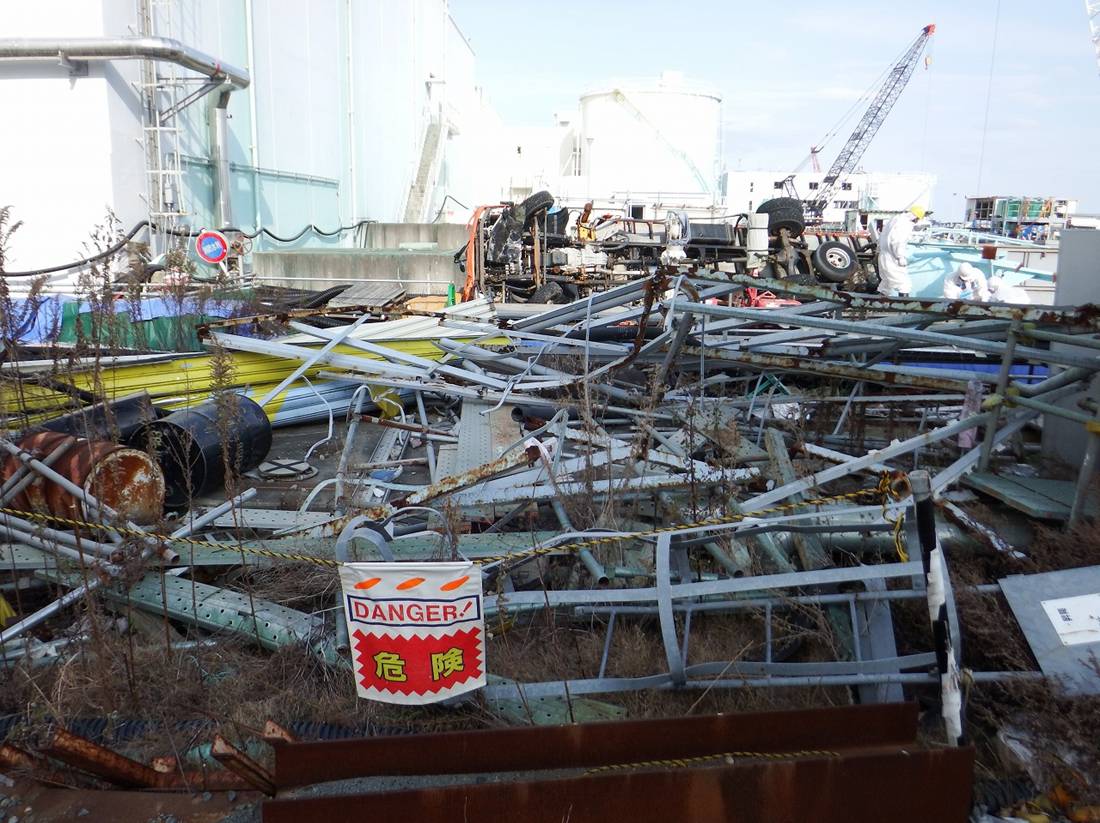
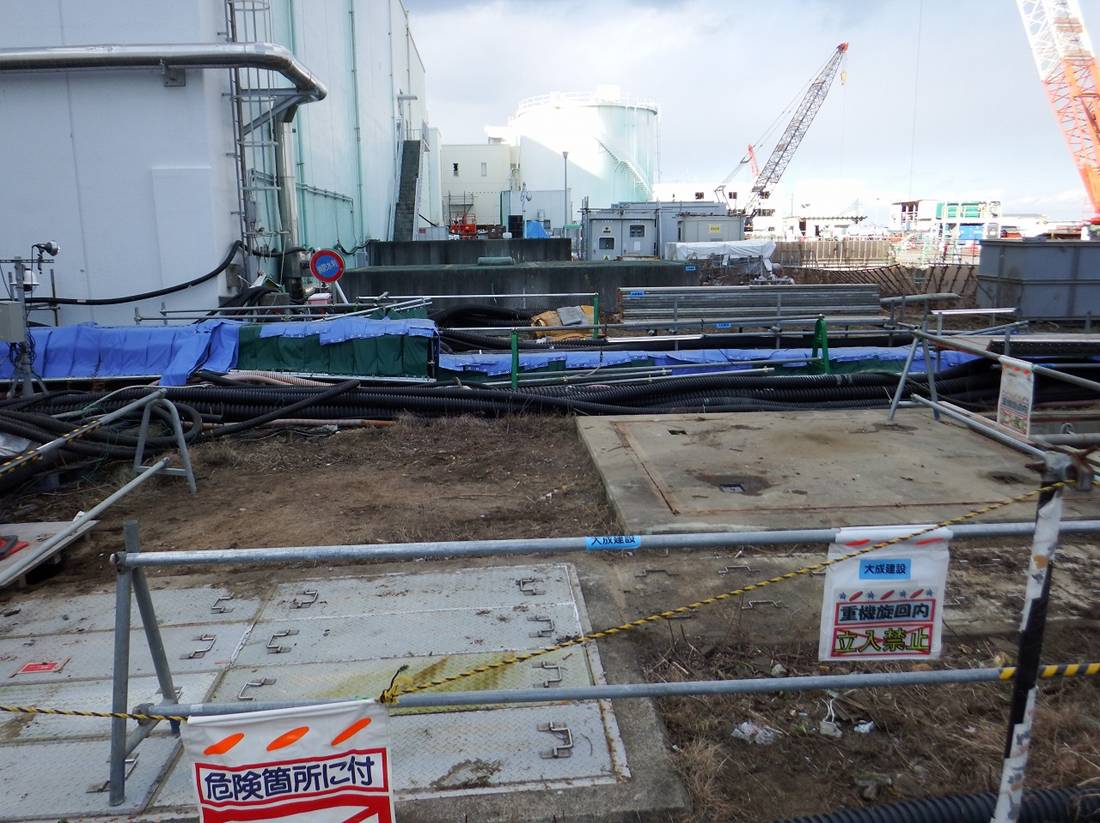

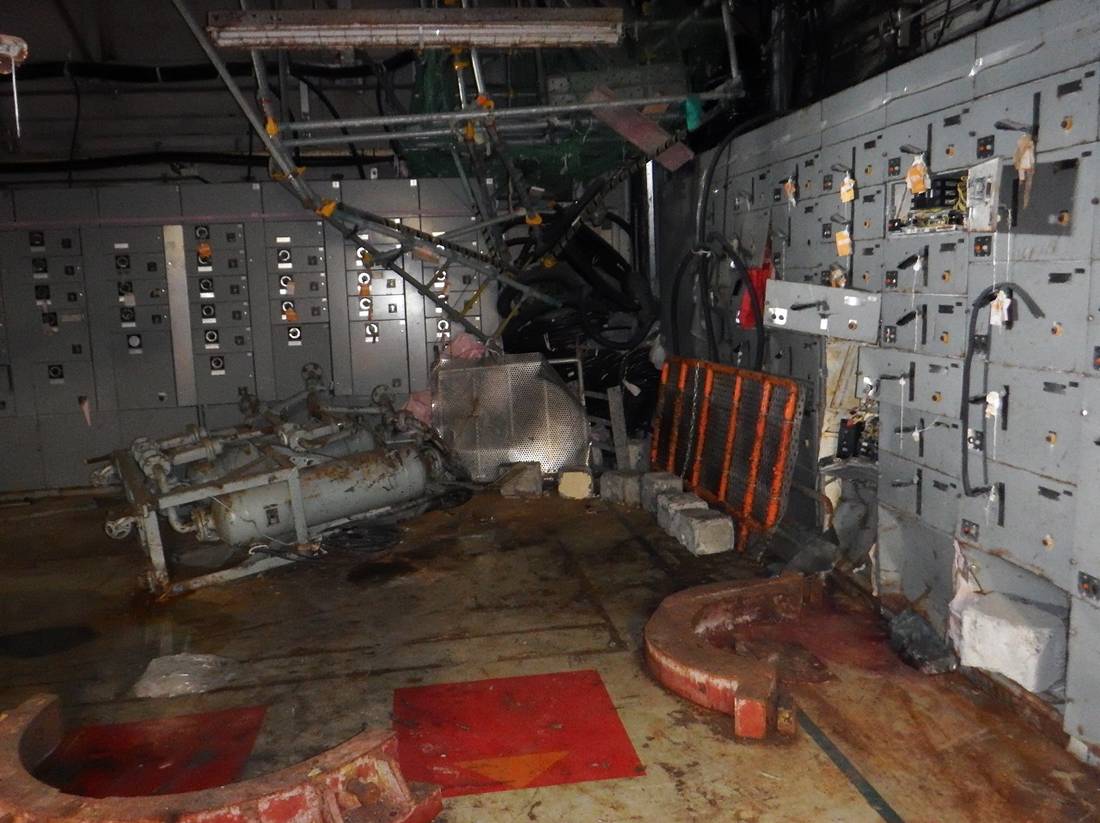

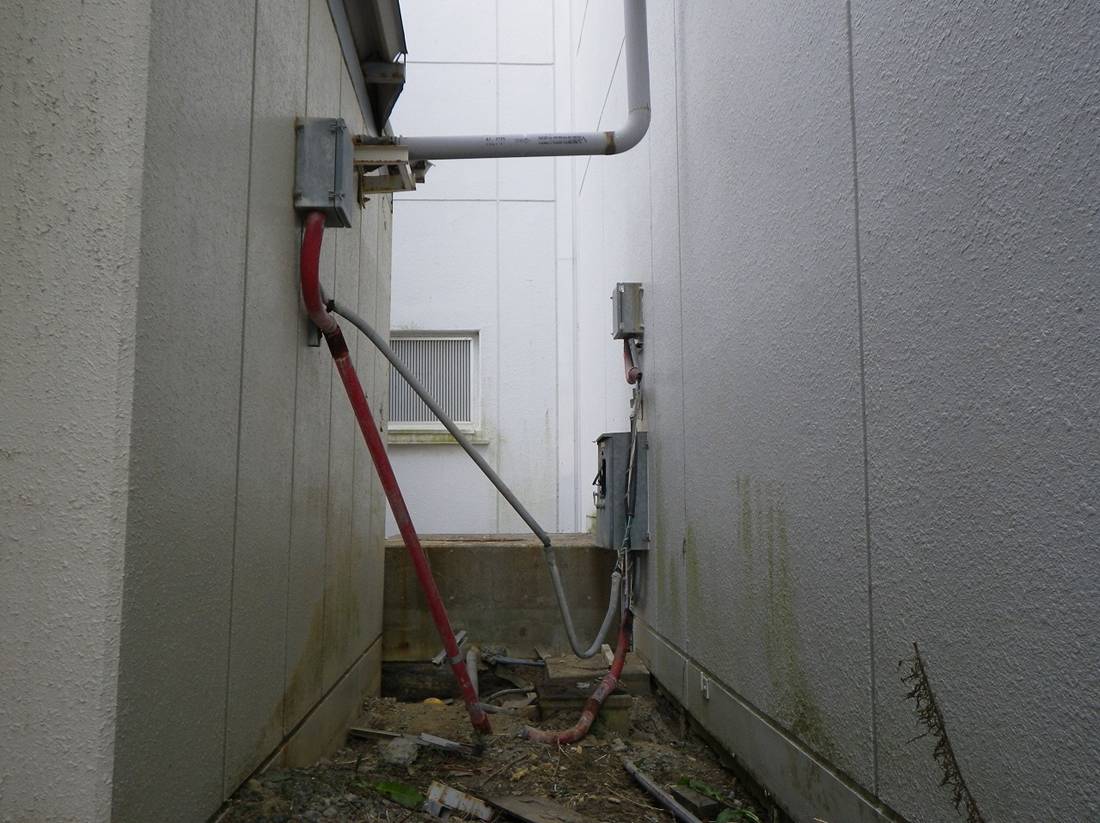
No comments:
Post a Comment